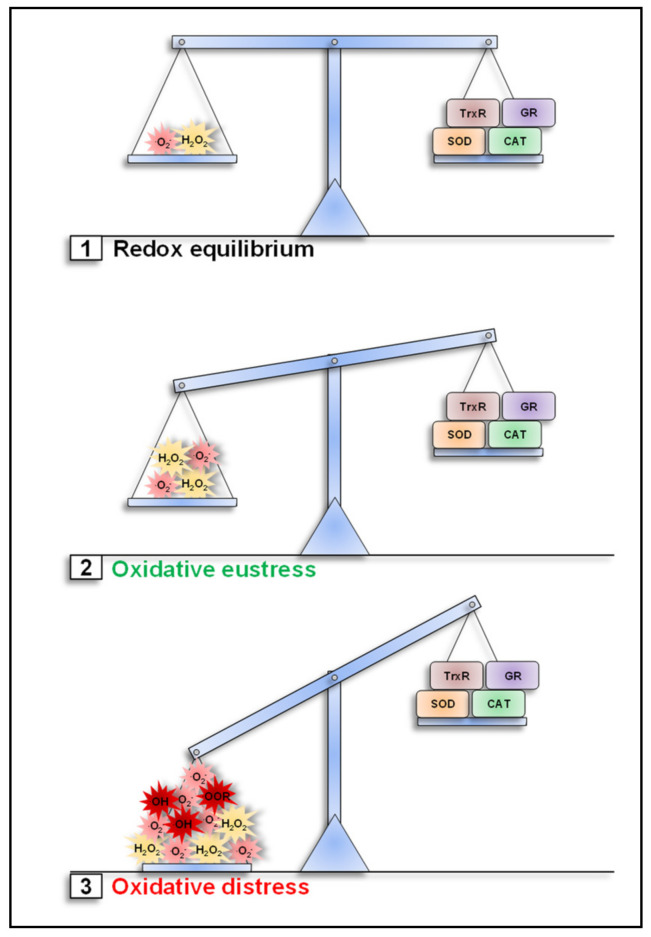Figure 2.
The redox status of the cell is influenced by ROS production on the oxidative side and the antioxidant defense system on the reductive side. (1) If ROS producing and eliminating factors are in equilibrium, redox balance is achieved, which represents the normal status in cells. (2) ROS production can be increased and exceed the capacity of the antioxidant defense system. If excess ROS fulfill important cellular functions, this is called oxidative eustress. (3) Continuous ROS production beyond the level required for cellular functions leads to oxidative damage and is called oxidative distress. Thioredoxin reductase (TrxR), glutathione reductase (GR), superoxide dismutase (SOD), catalase (CAT).

